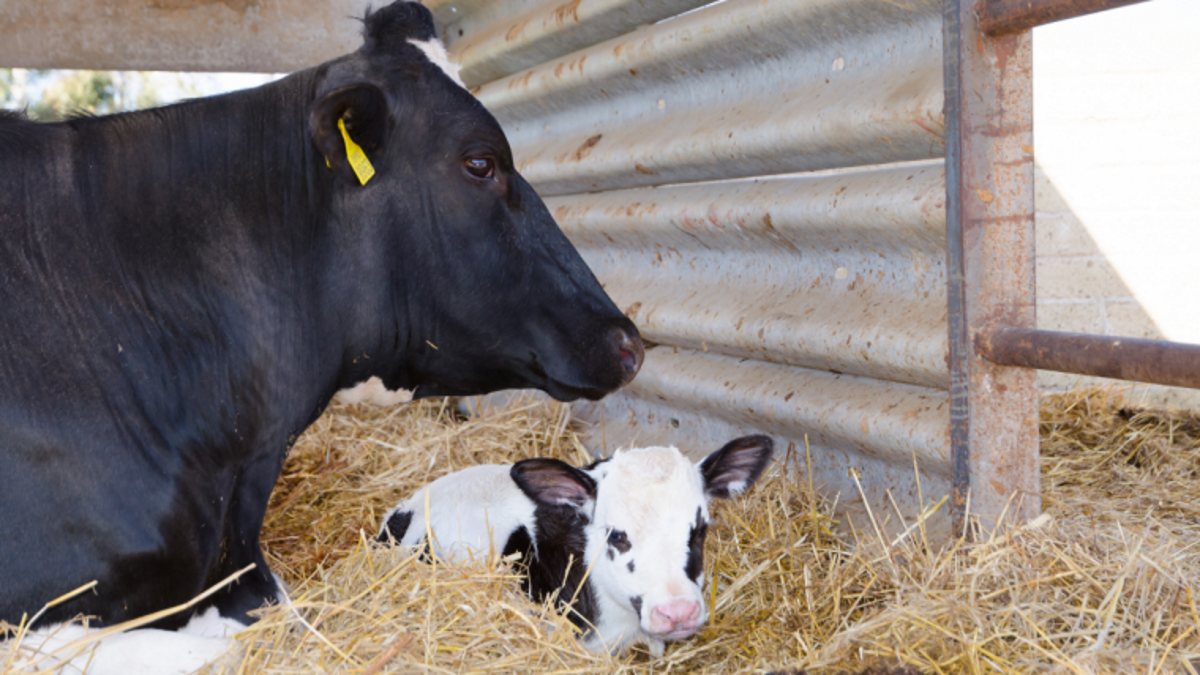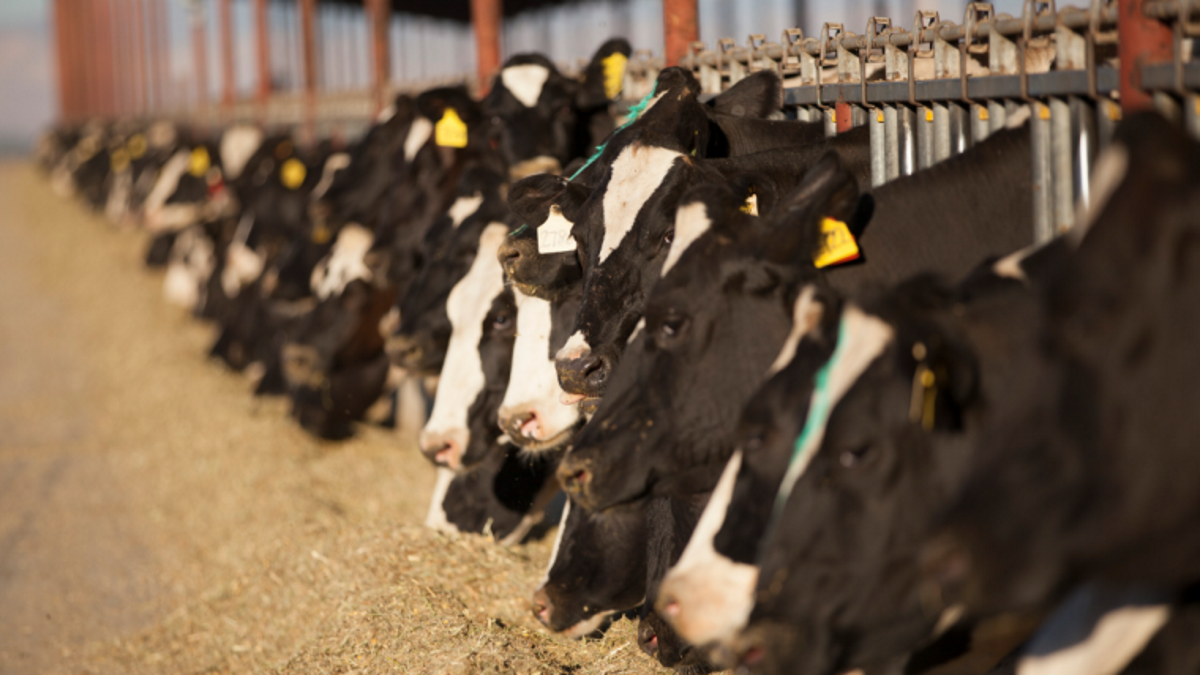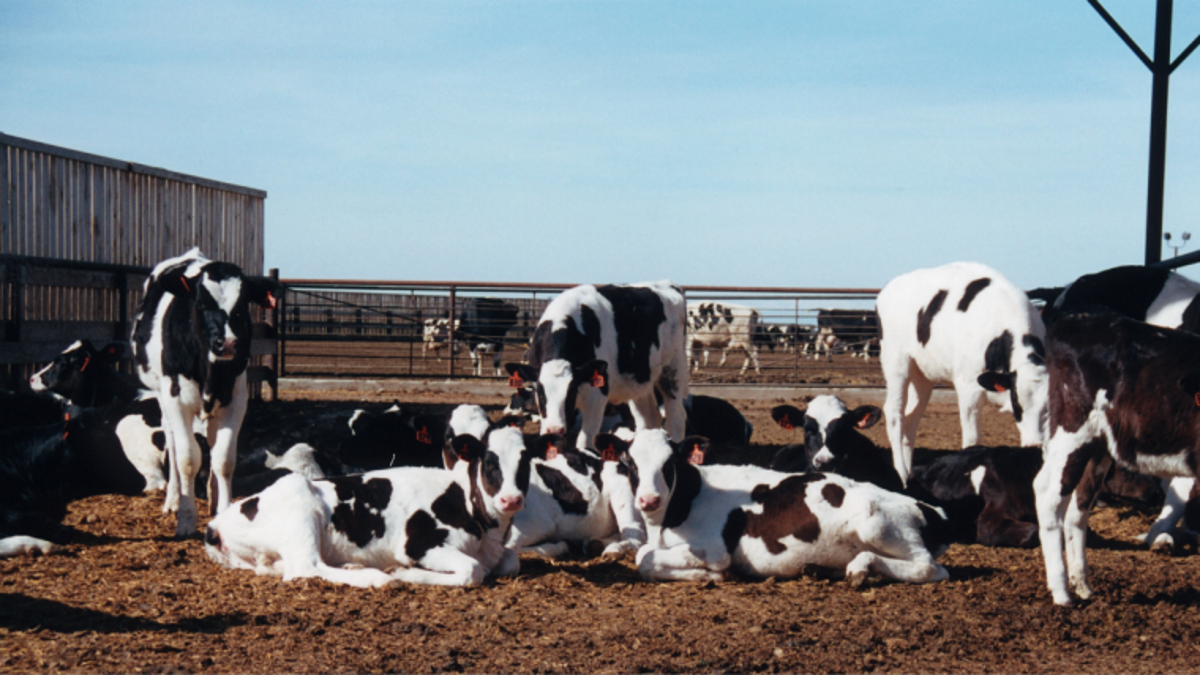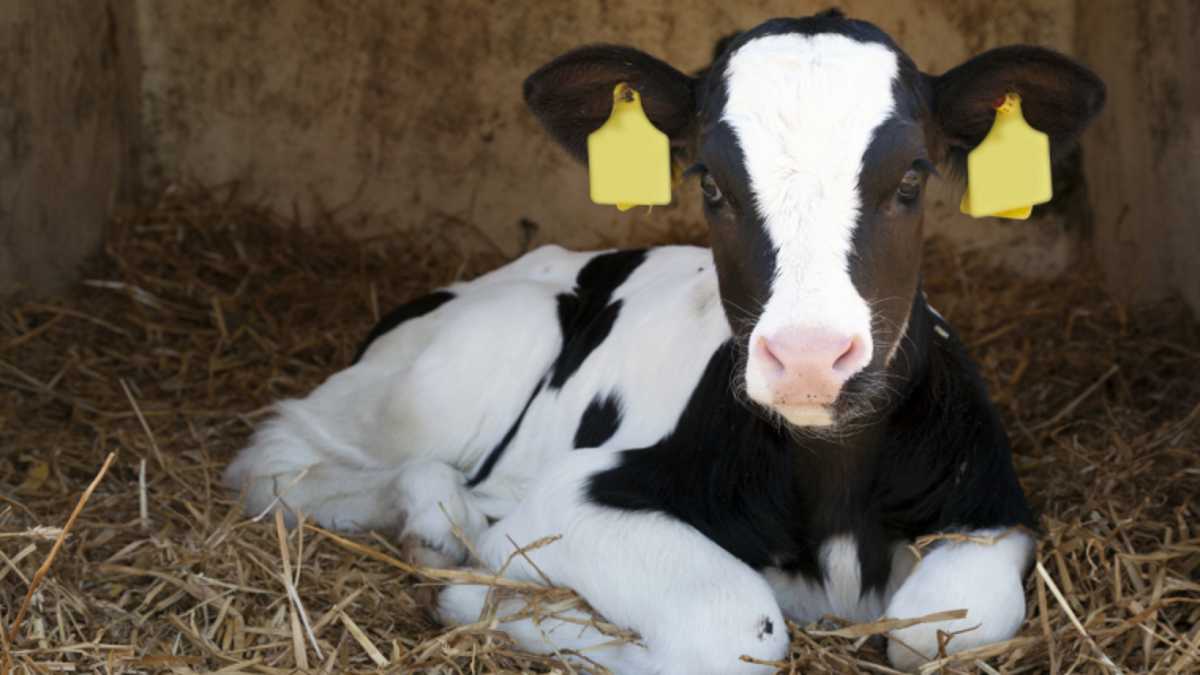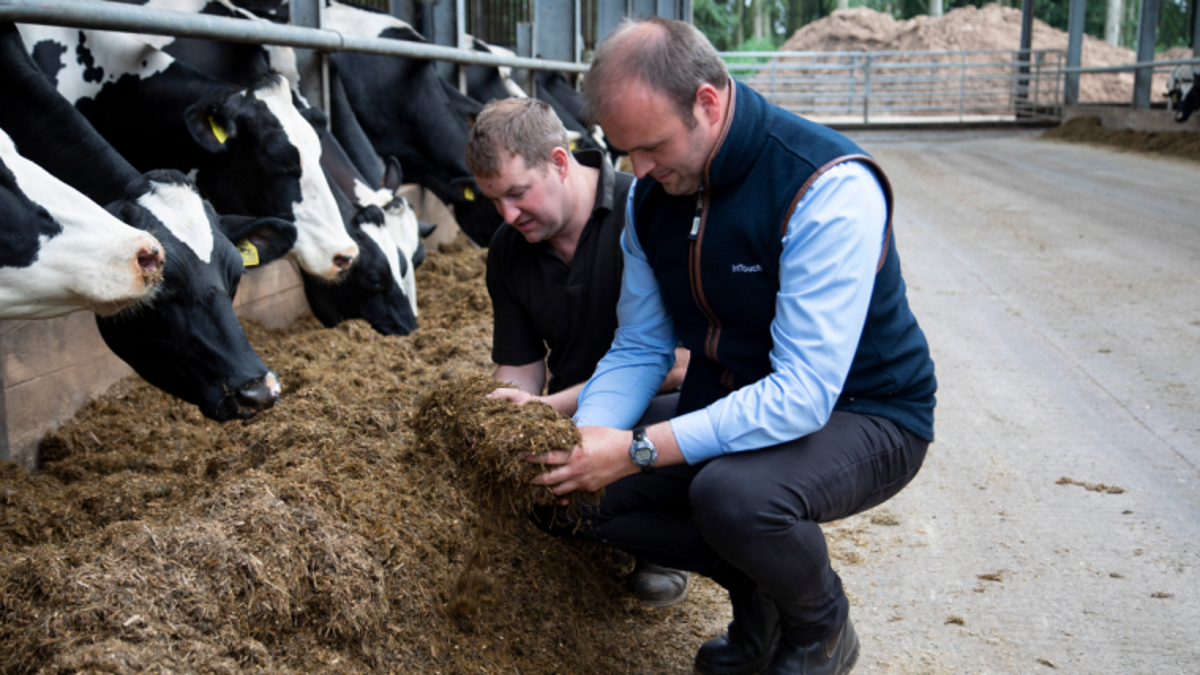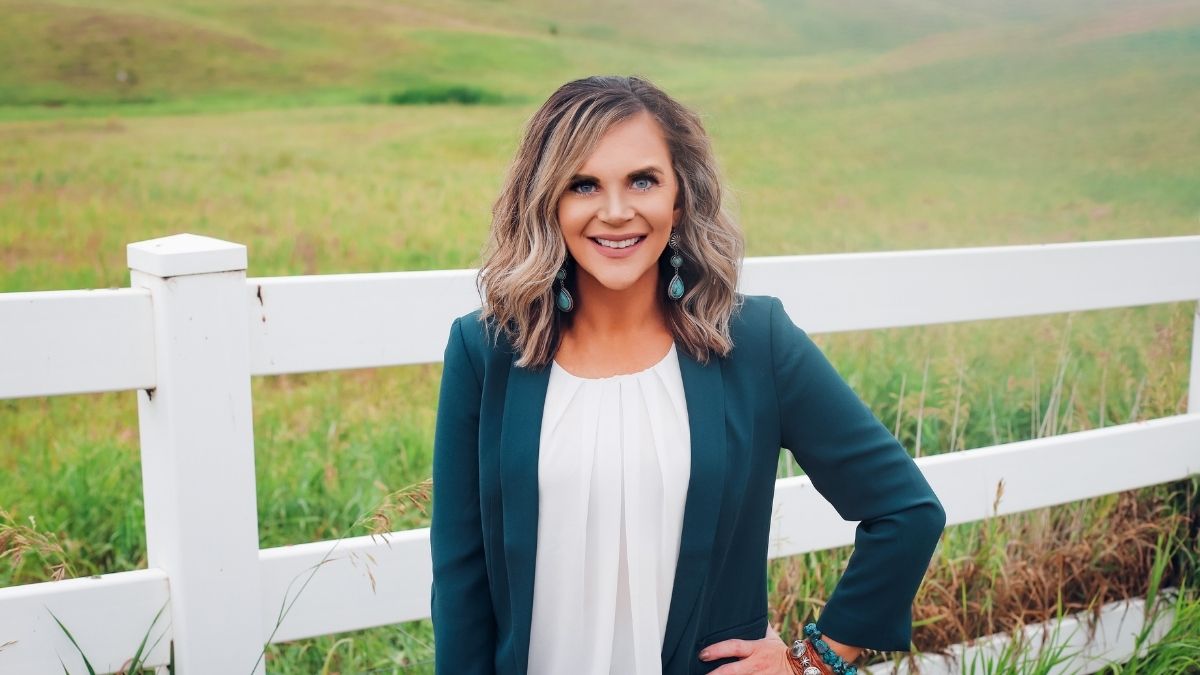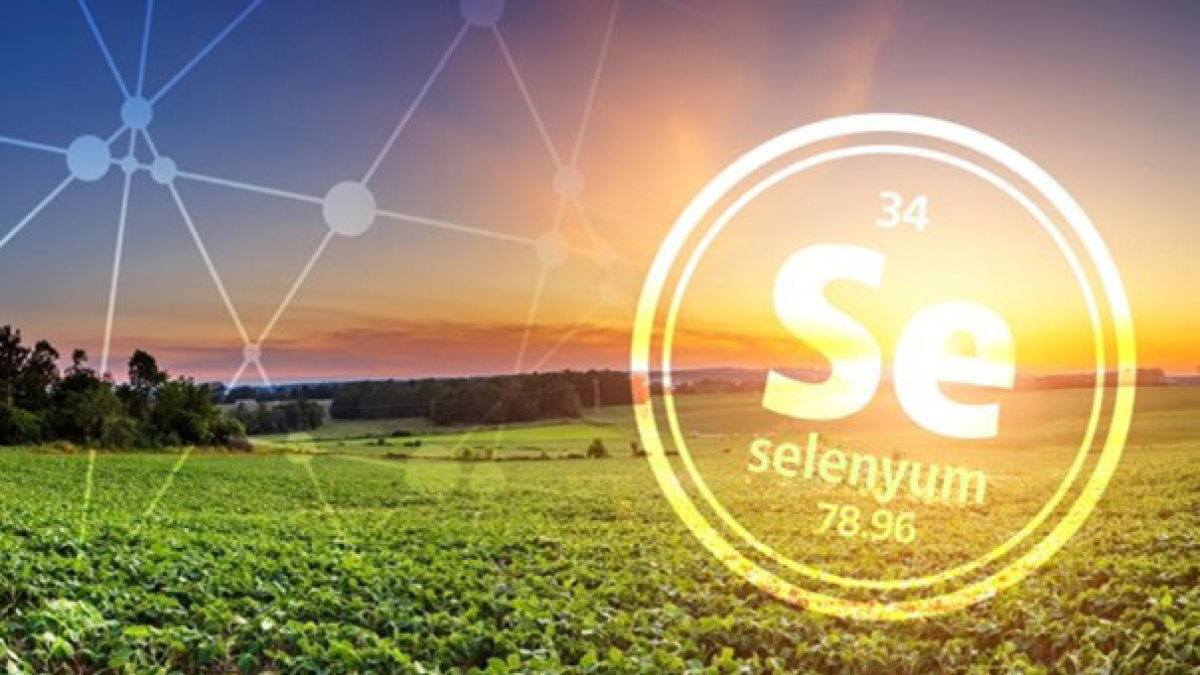As a fifth-generation rancher, BEEF blogger and speaker, Amanda Radke has dedicated her career to serving as a voice for beef producers in the United States. Amanda joined our expert panel during Alltech's affiliated session at the UN Food Systems Pre-Summit to provide a beef producer's perspective on the future of protein security. Today, she joins us on the Ag Future podcast to discuss a range of topics, including consumer misconceptions, ag literacy and beef's role in feeding our planet while conserving the Earth's natural resources.
The following is an edited transcript of the Ag Future podcast episode with Amanda Radke hosted by Tom Martin. Click below to hear the full audio or listen to the episode on Apple Podcasts or Spotify.
Tom: Welcome to AgFuture, presented by Alltech. Join us as we explore the challenges and opportunities facing the global food supply chain and speak with experts working to support a Planet of Plenty.
I’m Tom Martin, and with me is Amanda Radke, a fifth-generation cattle rancher from Mitchell, South Dakota, who has dedicated her career to serving as a voice for the nation’s beef producers. She travels the country speaking to agricultural groups about hot industry topics — (and was) included the (lineup for the) 2020 Alltech ONE Ideas Conference, as a matter of fact.
Amanda also is a blogger for Beef Magazine, providing timely industry news week by week, and she joins us to talk about a recent experience as a panelist at an Alltech-sponsored conference leading up to the U.N. Food System Summit, where she brought a producer’s perspective to an important discussion about the efficient use of resources.
Welcome to AgFuture, Amanda.
Amanda: Well, thanks for having me.
Tom: The panel that you participated in looked at the future of protein security and how to maximize the efficiency of production resources without unintended social, cultural and environmental consequences. You were the only producer on that panel. And, first of all, I’m wondering if you went into the discussion anticipating having to defend production practices.
Amanda: Yeah. I kind of chuckled because I felt, “Oh, I’m missing the ‘Ph.D.’ behind my name. I’m not sure if I’m qualified to speak on this.” And, you know, the Alltech folks assured me, “No, no, we want someone that’s actually, you know, managing the land and taking care of the cattle and can offer that perspective.”
And so, I was really proud to be able to represent beef producers from here and around the world and highlight some of the things that we already do very well in regards to managing our land and responsibly taking care of our natural resources and creating a product that is not only nutritious but that is a sustainable part of a healthy diet.
Tom: Well, as a matter of fact, I know that you did do your homework. Prior to the panel discussion, you asked federal ranchers, through your blog, what they would tell the U.N. about beef production. Could you share some of the more useful feedback that you got from that?
Amanda: Absolutely. I definitely wanted to crowdsource on this as I prepared for the presentation, because producers know best. And, really, what I wanted to highlight — and what seemed to be a common theme from the responses — was (that) ranchers uniquely match, you know, their production practices to their environmental landscape that they’re working with.
And so, for example, what I can grow here in South Dakota might be different than someone could grow in, you know, California or Africa or somewhere else entirely. And that’s really the beauty of beef cattle, is that they fit into this mix when we’re talking about environmental management and production practices, because they can utilize land that would otherwise, you know, sit barren and go to waste.
Tom: The pre-summit event featured a lot of talk around things like greenhouse gas emissions, (which are) certainly top of mind these days, with the latest U.N. report telling us that the situation maybe more pronounced and maybe even more dire than we thought. But you chose to focus on real-world ranching applications that folks should know about. And from your perspective, is there a disconnect between what producers know and what the rest of the world perceives about beef production?
Amanda: Yes. (For) the producers, it’s rather frustrating to see the beef cow take the brunt of the discussion on climate change, because the fact of the matter is is that, you know, here in the United States, the U.S. beef industry contributes 3.4% of total greenhouse gas emissions, according to the EPA. And Frank Mitloehner, who we know very well as an expert in greenhouse gas emissions from UC Davis, he has said if every American were to go meatless on Mondays, as suggested, to help save the planet, it would only reduce our greenhouse gas emissions by 0.26%.
And so, the reality is is that we can’t eat our way out of climate change, and simply giving up a burger isn’t going to move the needle in any significant direction. And just on the food side of things, one thing I’d like to tell people is, if they truly want to make a dietary change to help the planet, we need to be focusing on food waste and respecting our harvest, because 40% of what we grow in the United States ends up in landfills.
And so, if we can respect the harvest, reduce waste and focus on waste (so) that we can redistribute some of this abundance and get it to people who need it the most, that’s truly what I would like to focus on — outside of, you know, what I’m doing on the ranch and raising beef cattle.
Tom: You mentioned diet. How is our world diet changing with respect to protein?
Amanda: You know, I see this huge push for us to go to, you know, plant-based proteins or eating cricket protein powder or cicadas and other, maybe, things that we’re not used to having on our plates here in the United States. But yet, the global consumer is saying, “We want something else,” and what they want is more animal protein.
So, global meat consumption is expected to increase 1% in 2021, which is really exciting stuff, because producers, I think, are up to the challenge and the task of feeding a hungry planet. And as the middle class is growing around the world and people have more disposable income to spend on food, the first thing that they’re wanting to do is update their — their bean-and-rice diet and add some meat to their plates.
And so, again, I think we are up for the challenge. We can produce more beef today using pure and natural resources than ever before, and so, it’s an exciting time. And I think, as long as we can curtail some of the regulatory burdens and media campaigns that seek to paint meat in a bad light, the sky is the limit for livestock producers in what they’re going to be able to achieve in the coming years.
Tom: In a synopsis of the panel discussion, Alltech suggested that calls for reductions in animal agriculture could actually create a protein deficit that, due to the limitations of available arable land and water, can’t be overcome by growing crops. Are the implications of this trend not fully understood or recognized by consumers, do you think?
Amanda: Absolutely. You know, looking at my pastures here in South Dakota, they are steep and they’re hilly, and we get dry, and we absolutely could not plow up these lands and grow anything else. But what we can do is put ruminant animals like beef cattle on the ranch, and they can graze the grass, and when they do that, they’re doing a lot of important things. They are aerating the soil with their hooves. They are naturally fertilizing it with their manure. They are protecting the landscapes, which keeps a cover on it with those native grasses that have grown here for a hundred-plus years. And those grasses have roots that extend down tens of feet into the soil, so they’re capturing carbon by maintaining that grass.
They’re also protecting wildlife habitats as well, because when you (cover) that up, the deer and the rabbits and the other little wildlife pastures are suddenly misplaced. And then, ultimately, they can take this grass, these grasses, and they can convert it into nutrient-dense beef. And on top of that, they’re reducing the spread of wildfires because they are eating the brush and eliminating that dead brush and promoting new growth.
And I could go on and on. But this phenomenon that we see — that cattle do with this grass one — is an important piece, because we simply think that we can replace it and do something else, but truly, that beef cow does something very unique and very important to managing our natural resources and producing enough to adequately provide for humanity.
Tom: Well, from your perspective as a producer, what do you wish consumers understood about the difference between protein derived from meat versus that derived from plants?
Amanda: I’m really proud to raise beef that is jam-packed full of nutrients. And so, the nutrients found in beef are very bioavailable, meaning they are readily absorbed by the body. Beef includes ten central nutrients, including zinc, iron and protein.
And what’s really cool about beef is a 3-ounce serving provides 180 calories. And in that 180-calorie serving, you get 25 grams of protein. Now, to get that same amount of protein from a plant-based source, like broccoli or peanut butter or quinoa, you’d have to eat several cups or 600-plus calories of these feed item or food items to get that same 25 grams of protein.
And so, calorie for calorie, (beef) is truly a super food, and that’s where it gets really frustrating when we talk about eliminating meat from the equation, because it simply ignores the fact that it is a nutritious, wholesome food product that benefits people here and around the world as far as providing, you know, adequate protein to meet their needs.
Tom: In a synopsis of the panel discussion, Alltech suggested that calls for reduction in animal agriculture could create a protein deficit that due to the limitations of available arable land and water cannot be overcome by growing crops. Are the implications of this trend not fully understood or recognized by consumers?
Amanda: Yeah. I think that is a big misconception that people have, that we can simply replace animal agriculture and, you know, plow the land and plant something entirely different. And the reality is that there’s a large percentage of land around the world that is too steep, hilly or rocky for modernizing or farming. And so, what my cattle can do — and cattle around the world can do — is they can go into these steep and rocky and hilly landscapes — for example, like the rolling hills outside my back window here in South Dakota that are home to native grasses that have been growing here for hundreds of years — and they can go into that landscape, and they can graze the brush, which reduces the spread of wildfires and promote new growth. They aerate the soil with their hooves. They naturally fertilize these lands with their manure. And they protect the wildlife habitat simply by maintaining that grassland. And on top of that, they can upcycle the cellulosic material that is grass, and they can convert it into that nutrient-dense beef.
And so, cattle and ruminant animals really play a critical role in utilizing these lands that would otherwise go wasted. And so, it is truly a beautiful thing to see, and I wish every consumer had the opportunity to visit a cattle ranch and see cattle in action on the ranch amidst the wildlife and the rolling hills and see what they can do to really, really make the most out of the landscape.
Tom: That’s what the animals can do. In what ways have cattle ranchers excelled in conserving resources?
Amanda: There are so many principles of soil health that we follow that aren’t celebrated or aren’t greatly understood or even acknowledged as being not just sustainable but truly improving the landscape, year after year.
And so, some of these principles of soil health that we follow is, you know, trying to mimic nature and keeping a cover on the soil as much as we can. And so, not only by maintaining grasslands do we do that, but on our crop fields, where we might plant corn, in between the corn rows, we’re planting what’s called cover crops, which includes a variety of plants, like radishes, turnips, alfalfa, etc. And then, after the fall harvest, when we’ve harvested that corn, our cattle can go in and graze the cover crops, as well as the corn stalks, and it becomes a really great cycle where we’re adding nitrogen back to the soil and we’re creating feed for our cattle, and then, our cattle are then fertilizing our cornfields as well.
We plant — we not only do those kinds of things, but we practice things like rotational grazing, where we create smaller paddocks in our pastures, and we’ll move the cows from paddock to paddock in order to avoid overgrazing and to stimulate new growth and allow for some of that, (for) those plants to recover after the cattle have come through and grazed.
Farther out West, where pastures are large and it’s a little bit tougher to practice rotational grazing, producers will do a lot of things, like piping water so that cattle can move to different places in their pastures and utilize those grasslands even more than they normally would.
And then, we’re very conscious of the wildlife that live here, and so, understanding that we’re providing a home for these wildlife — and on a given day, we can see anything from hawks to fish to bumble bees and everything in between. It truly is a beautiful thing to see. And like I said, the production practices that ranchers already employ on their farms are really worth celebrating and taking a closer look at.
Tom: You know, it seems as though we can’t talk about anything these days without COVID-19 coming up somehow. And I’m wondering: What are some important ways that the pandemic has impacted ranching and beef production?
Amanda: You know, 2020 was pretty difficult for animal agriculture. I had friends in the pork industry that had to euthanize their animals because the processing plants had slowed down their lines or shut down entirely. Folks had nowhere to go with their animals. This was a true tragedy, not only from the producers’ standpoint and the financial loss and the loss of life without, you know, being able to respectfully utilize these animals, but on the other side, it also just was a waste to (not be able to) provide that meat for consumers.
We also saw shortages in the grocery store, you know, whether it was toilet paper or meat and dairy products. All of a sudden, consumers were seeing — maybe for the first time — that their favorite products or brands weren’t always available, because of, you know, COVID supply chain disruptions.
And so, I truly think, while it was a difficult time and has been and continues to be challenging in a lot of ways, (it is) also a unique opportunity for ranchers and farmers to connect with consumers in brand new ways. For example, I’ve seen a lot of producers find great success selling their beef direct to consumers and educating them for the first time, you know, (or people buying) a quarter or half of beef and buying bulk and filling their freezers to stockpile, you know, for the year so that they’re good during an emergency, when the grocery stores might be short.
And so — not only that, but consumers are suddenly wanting to ask more questions, and they’re wanting to go directly to the producer to ask those questions. And so, I think, in agriculture, we can continue to be a transparent and authentic resource that’s readily available to answer their questions. We can not only grow those relationships, but we can also start earning a premium for our products and start taking control of our markets and our ability to make money, even during difficult times.
Tom: (This question is) not related to the panel discussion that we’ve been talking about, but I know that this subject is important to you, Amanda, and that is ag literacy, especially among future generations of producers. Tell us about this concern.
Amanda: Yeah. You know, ten years ago, I started noticing that there weren’t a lot of agriculturally accurate books on the shelves. And what I mean by that is there’s plenty of farm books out there, and there’s plenty of movies, too, for kids, but they usually characterize the animal and give them the full range of motion and, you know, maybe the farmer or the rancher is the bad guy or the side character. And I really wanted to flip the narrative on that and highlight the farmer and the rancher and the animal caretaker and show their role in, you know, providing the essentials for these animals and taking care of the land and getting food to the table.
And so, ten years ago, I wrote my first children’s book, titled “Levi’s Lost Calf,” and since then, I’ve had three more released, and I have two more in the works that will come out in 2021. And truly, the focus of these books is to counter the misconceptions that are out there and teach kids about where their food comes from and, ultimately, help to empower the next generation of consumers so that they truly understand and know about agriculture when they go to the grocery store to make purchasing decisions.
Tom: How can farm moms and dads out there find these books?
Amanda: They can visit Amazon; all my titles are (available) there. And they can also check out AmandaRadke.com — and I’d be delighted to work with farm groups or schools to also get books purchased in bulk to try to get to as many young people as we can in elementary schools as well.
So, feel free to reach out to me, and I’ll help you connect the right book to the right classroom. One story at a time, we will teach kids about where their food comes from.
Tom: And Amanda, I have to ask you this. I took a look at your itinerary. I know you’re the mother of three kids, I believe, right?
Amanda: Yes. Well, more, as foster parents, so, yeah, we have extras all the time on the farm.
Tom: And a rancher and a blogger. Do you ever get any sleep?
Amanda: [laughs] Not much sleep — and a lot of coffee.
Tom: [laughs] Amanda Radke, fifth-generation cattle rancher in South Dakota and a prolific voice for the nation’s beef producers. Thanks so much, Amanda.
Amanda: Yeah. Thanks so much for having me.
Tom: This episode of AgFuture has featured a discussion from the U.N. Food Systems Pre-Summit around ensuring food security for a rising population while protecting the earth’s natural resources. The pre-summit event was hosted by Alltech.
Be sure to subscribe to AgFuture wherever you listen to podcasts.
I’m Tom Martin. Thanks for listening.

